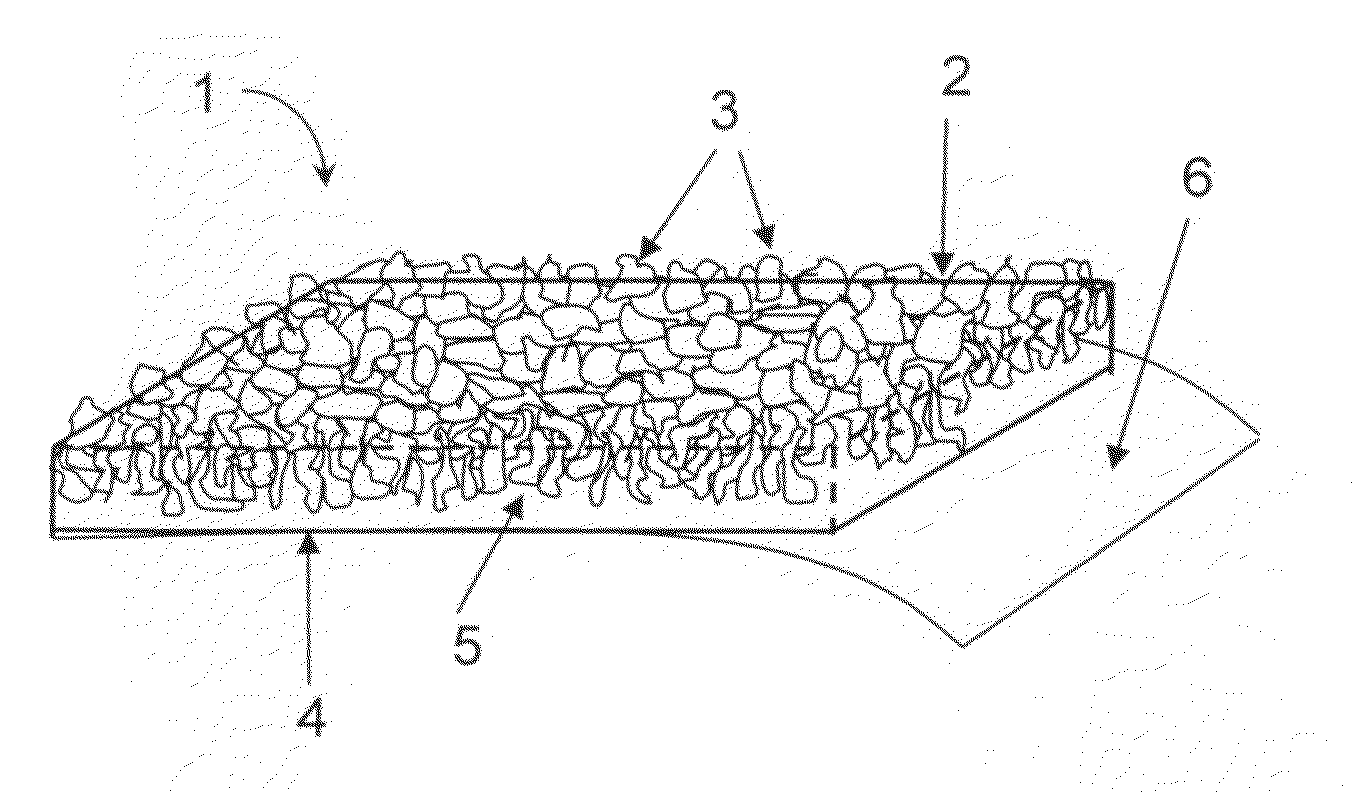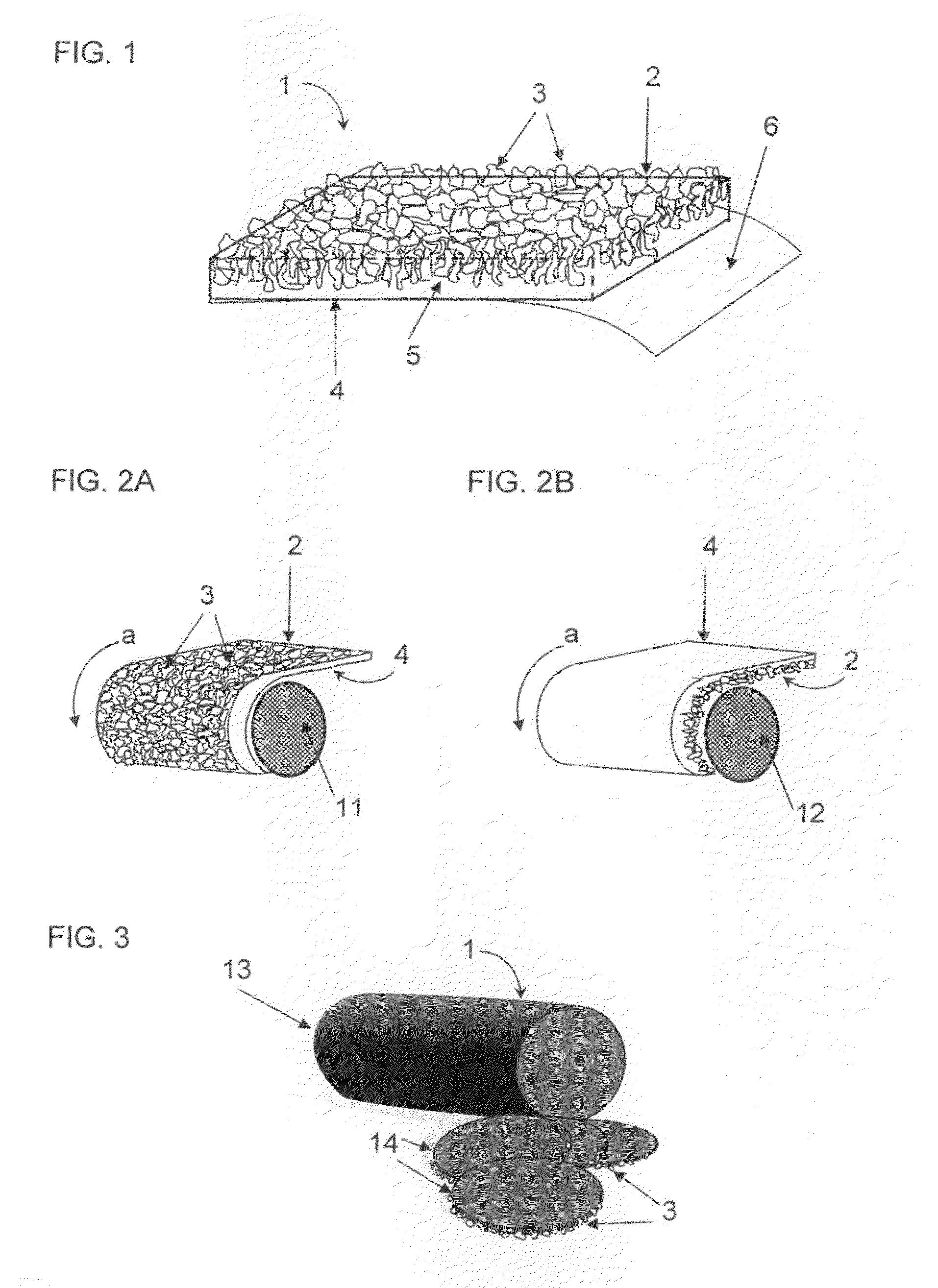Consumable spice-containing film and also processes for production thereof
a film and spice technology, applied in the direction of flexible covers, sausage casings with flavour impregnation, food preparation, etc., can solve the problems of spice particles being detached from food products or remaining on the spice film, difficult to find the optimal time for detaching the film, etc., and achieve high loading density
- Summary
- Abstract
- Description
- Claims
- Application Information
AI Technical Summary
Benefits of technology
Problems solved by technology
Method used
Image
Examples
example 1
Production of a Consumable Curry Spice Film for Encasing Foods
[0074]Step 1: A viscous solution in water, with a solids content of approximately 18.0%-wt., is prepared which consists of 10.6%-wt. sodium alginate (E 401), 7.2%-wt. glycerine (E 422), 0.18%-wt. curcumin (E 100) and 0.036%-wt. potassium sorbate (E 202).
[0075]Step 2: This viscous mass is spread, by a roller coating method, on the non-siliconised side of a POLYSLIK® 11 / 18 coating paper (as coating support; supplier: Loparex), corresponding to a matrix dry weight of approximately 110 g / m2.
[0076]Step 3: A curry powder that has been covered with a spice adhesive is sprinkled onto the still moist spread, over the entire surface of said spread and in an excessive amount. Curry powder mainly consists of the ground rhizome of turmeric (Curcuma). More than 90% of the particles of the curry spice used is within a size range of ≦800 μm, and approximately 65% of the particles falls within a size range of ≧560 μm. Excess, i.e. unbound...
example 2
Production of a Consumable Peppercorn Film for Covering Foods
[0079]Step 1: A viscous solution in water, with a solids content of approximately 15.0%-wt., is prepared which consists of 13.5%-wt. hydroxy propyl methyl cellulose 50 cps, Type 2910 (E 464), 1.5%-wt. glycerine (E 422) and 0.03%-wt. potassium sorbate (E 202).
[0080]Step 2: This viscous mass is spread out, using a roller coating method, onto the non-siliconised side of a POLYSLIK®11 / 18 coating paper, corresponding to a matrix dry weight of approximately 120 g / m2.
[0081]Step 3: A spice consisting of fragments of black pepper corns (Piper nigrum) is sprinkled onto the still moist spread, over the entire surface thereof and in an excessive amount.
[0082]More than 85% of the particles of the peppercorns used are within the size region ≦800 μm, and approximately 65% of the particles are within a size range of ≧560 μm. Excess, that is, non-bound pepper particles are dropped by deflecting the coating support. Step 4: The spread, whic...
PUM
 Login to View More
Login to View More Abstract
Description
Claims
Application Information
 Login to View More
Login to View More - R&D
- Intellectual Property
- Life Sciences
- Materials
- Tech Scout
- Unparalleled Data Quality
- Higher Quality Content
- 60% Fewer Hallucinations
Browse by: Latest US Patents, China's latest patents, Technical Efficacy Thesaurus, Application Domain, Technology Topic, Popular Technical Reports.
© 2025 PatSnap. All rights reserved.Legal|Privacy policy|Modern Slavery Act Transparency Statement|Sitemap|About US| Contact US: help@patsnap.com


